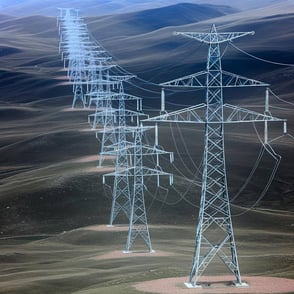Load Forecasting
Load forecasting predicts future electricity demand using historical data, weather, and economic factors. It's essential for grid stability, resource optimization, and cost reduction.
What is Load Forecasting?
Load forecasting is a critical process in the energy management and utility industries, where future electricity demand is predicted based on historical data and various influencing factors. This practice is essential for ensuring grid stability, optimizing energy production, and reducing operational costs. Accurate load forecasting helps utilities balance supply and demand, manage resources more efficiently, and plan for future infrastructure needs.
How Load Forecasting Works
Load forecasting involves predicting future energy demand using a variety of statistical, computational, and AI techniques. The accuracy of these predictions can significantly impact the operational and financial performance of energy providers.
These predictions make use of several factors. Historical data, which includes past consumption patterns, is crucial for predicting future demands. Furthermore, since weather significantly affects energy usage (e.g., heating and cooling demands), meteorological data are integral to accurate load forecasting. Economic trends and population growth data also helps forecast long-term energy demand changes. Finally, considering the impact of holidays, events, or other irregular occurrences that might affect typical usage patterns.
Load forecasting uses time series analyses, utilizing historical load data to forecast future demand based on identified patterns, regression models to estimate relationships between the load and influencing factors, and machine learning techniques where advanced algorithms such as neural networks and decision trees analyze complex datasets to predict future loads with higher accuracy.
The Impact of Load Forecasting on the Energy Sector
Accurate load forecasting has profound implications across the energy sector. By predicting peak demand times, utilities can ensure adequate energy supply, preventing overloads and potential blackouts, and increasing the grid stability. Forecasting helps in optimizing the generation schedule of power plants, incorporating more renewable energy sources when possible, and reducing reliance on expensive and polluting peaker plants. Utilities can save substantial costs by reducing excess electricity production and minimizing fuel waste. Better forecasts allow for more efficient resource allocation. Lastly, long-term load forecasting supports the planning and development of infrastructure projects, ensuring that investments are made strategically to meet future demand.
Despite its importance, load forecasting faces several challenges. Inaccurate or incomplete data can lead to poor forecasts, affecting utility operations and financial performance. More and more, renewable energy forecasting like solar and wind need to be integrated into load forecasting models, complicating predictions. Further complicating this, is that as technologies and behaviors change, historical data may not always be a reliable predictor of future demand.
Conclusion
Load forecasting is a vital process in energy management, crucial for maintaining grid reliability, optimizing resources, and reducing operational costs. As the energy sector continues to evolve, the importance of accurate load forecasting will only increase. Advancements in technology and data analytics are expected to enhance the precision of forecasts, allowing for even more effective management of energy systems. This will not only benefit utility companies but also contribute to a more sustainable and efficient energy landscape.
Glossary
- Energy Management: Monitoring, controlling, and optimizing energy consumption to reduce waste and costs
- Historical Data: Past electricity consumption records used to identify patterns and trends for future demand prediction.
- Meteorological Data: Weather-related information that influences energy demand, crucial for accurate load forecasting.
- Economic Factors: Variables like economic growth, unemployment rates, and industrial activity that impact energy demand.
- Time Series Analysis: A statistical method analyzing data points over time to identify trends and predict future energy demand.
- Regression Models: Statistical techniques estimating the relationship between energy demand and influencing factors.
- Machine Learning: AI algorithms trained on historical data to identify patterns and improve forecasting accuracy.
- Neural Networks: Machine learning models that process complex data inputs to predict future energy demand.
- Decision Trees: Machine learning models that make predictions based on decision rules derived from input data.
- Peak Demand: The highest level of electricity demand within a specific period, critical for grid stability planning.
- Load Forecasting: Predicting future electricity demand using historical data and various influencing factors.
-
Grid Stability: The ability of an electrical grid to consistently supply power without interruptions.
.png?width=200&height=80&name=etpa-logo-color%20(1).png)































.png)
.png)
-1.png?width=250&height=100&name=etpa-logo-color%20(1)-1.png)